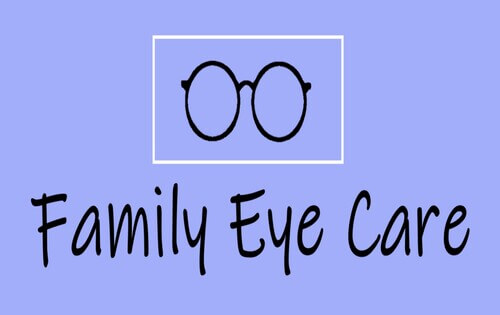Andalusia Pediatrics Clinics: Dedicated Look After Your Child's Health
Andalusia Pediatrics Clinics: Dedicated Look After Your Child's Health
Blog Article
The Benefits And Drawbacks of Different Refractive Surgeries for Enhanced Eyecare

LASIK Surgical Treatment
LASIK surgery is a generally executed refractive treatment that aims to fix vision problems such as nearsightedness, astigmatism, and farsightedness. Throughout the procedure, a thin flap is created on the cornea, and a laser is used to reshape the underlying cells, dealing with the refractive mistake.
Among the key benefits of LASIK surgical treatment is the fast improvement in vision experienced by many clients. The majority of individuals notice a substantial improvement in their sight quickly after the treatment, with very little downtime required for recovery. In addition, LASIK is recognized for its high success rate and low incidence of issues when executed by experienced surgeons. Like any surgical procedure, LASIK also carries some risks, including completely dry eyes, glow, halos, and under or overcorrection of vision. It is necessary for individuals considering LASIK surgical procedure to undergo an extensive examination by an eye care specialist to figure out if they are ideal prospects for the procedure.
PRK Treatment
The PRK procedure, likewise known as Photorefractive Keratectomy, is a kind of refractive surgical procedure that aims to deal with vision problems similar to LASIK surgical procedure. Unlike LASIK, which entails producing a flap in the cornea, PRK works with the surface layer of the cornea. During the PRK procedure, the outer layer of the cornea, called the epithelium, is eliminated to permit reshaping of the underlying corneal cells with an excimer laser. This reshaping assists to remedy refractive errors such as farsightedness, astigmatism, and nearsightedness.
One of the benefits of PRK over LASIK is that it gets rid of the risk of flap-related complications considering that no flap is created throughout the surgical treatment. This can be beneficial for people with thin corneas or those included in get in touch with sporting activities where eye trauma is a possibility. Nevertheless, the recovery time for PRK is commonly longer contrasted to LASIK, as the outer layer of the cornea needs time to regrow after the treatment. Despite the longer recovery duration, PRK can be a suitable choice for people seeking vision correction surgery.
SMILE Surgery
A cutting-edge refractive surgical procedure method obtaining appeal in the field of ophthalmology is SMILE Surgical procedure. Small Cut Lenticule Extraction (SMILE) is a minimally invasive treatment that deals with vision by improving the cornea using a femtosecond laser. Unlike traditional LASIK surgery, SMILE Surgical treatment entails developing a little incision in the cornea to extract a lenticule, which causes much less this contact form interruption to the corneal framework and potentially faster healing times.
Among the primary advantages of SMILE Surgical treatment is its capacity to treat nearsightedness (nearsightedness) and astigmatism with high accuracy, causing exceptional visual outcomes for individuals. The minimally invasive nature of the treatment also lowers the danger of complications such as completely dry eye disorder, making it a positive option for people seeking refractive surgical procedure.

LASEK Strategy
Having discovered the benefits and considerations of SMILE Surgery, an additional notable refractive surgery strategy worth analyzing is the LASEK Our site Technique. LASEK, which stands for Laser-Assisted Subepithelial Keratectomy, is a type of laser eye surgery that intends to fix refractive errors such as myopia (nearsightedness), hyperopia (farsightedness), and astigmatism.
Unlike LASIK, LASEK does not entail creating a corneal flap. Instead, during a LASEK procedure, the doctor Full Article utilizes a watered down alcohol solution to loosen the slim outer layer of the cornea, known as the epithelium.
Among the key advantages of LASEK is that it can be appropriate for people with thin corneas who may not be good candidates for LASIK. Additionally, LASEK generally leads to marginal post-operative discomfort and a quicker recovery time compared to PRK. The aesthetic recuperation process with LASEK might be a little longer than with LASIK.
Implantable Contact Lenses
Implantable Contact Lenses provide a lasting vision correction service for people seeking an alternative to traditional contact lenses or glasses. These lenses, additionally called phakic intraocular lenses, are operatively put right into the eye to remedy refractive errors such as myopia (nearsightedness), hyperopia (farsightedness), and astigmatism. eye center andalusia. Unlike typical get in touch with lenses that remain on the surface of the eye, implantable get in touch with lenses work within the eye itself, offering clear vision without the requirement for everyday maintenance or elimination
One of the vital advantages of implantable contact lenses is their permanence. When placed, they can stay in the eye indefinitely, using stable and constant vision correction. Additionally, these lenses can be an excellent choice for people who are not great candidates for laser eye surgery or that prefer a relatively easy to fix vision modification treatment.
However, implantable get in touch with lenses do bring some threats, consisting of the possibility for cataracts or increased eye pressure. It is critical for individuals considering this choice to talk to an eye care specialist to establish if implantable contact lenses are the ideal selection for their specific demands and eye health and wellness.
Conclusion
Finally, each kind of refractive surgical procedure has its own advantages and downsides. LASIK surgery is prominent for its quick recuperation time, while PRK procedure might be appropriate for patients with slim corneas. SMILE surgical treatment offers very little discomfort during the procedure, but LASEK method may have a longer recovery process. Implantable call lenses supply an alternative for those that are not ideal prospects for standard surgical treatments. Individuals must speak with their eye treatment provider to figure out the very best alternative for their specific requirements.

Overall, SMILE Surgical procedure presents an appealing choice for people looking to improve their vision through refractive surgery.
Report this page